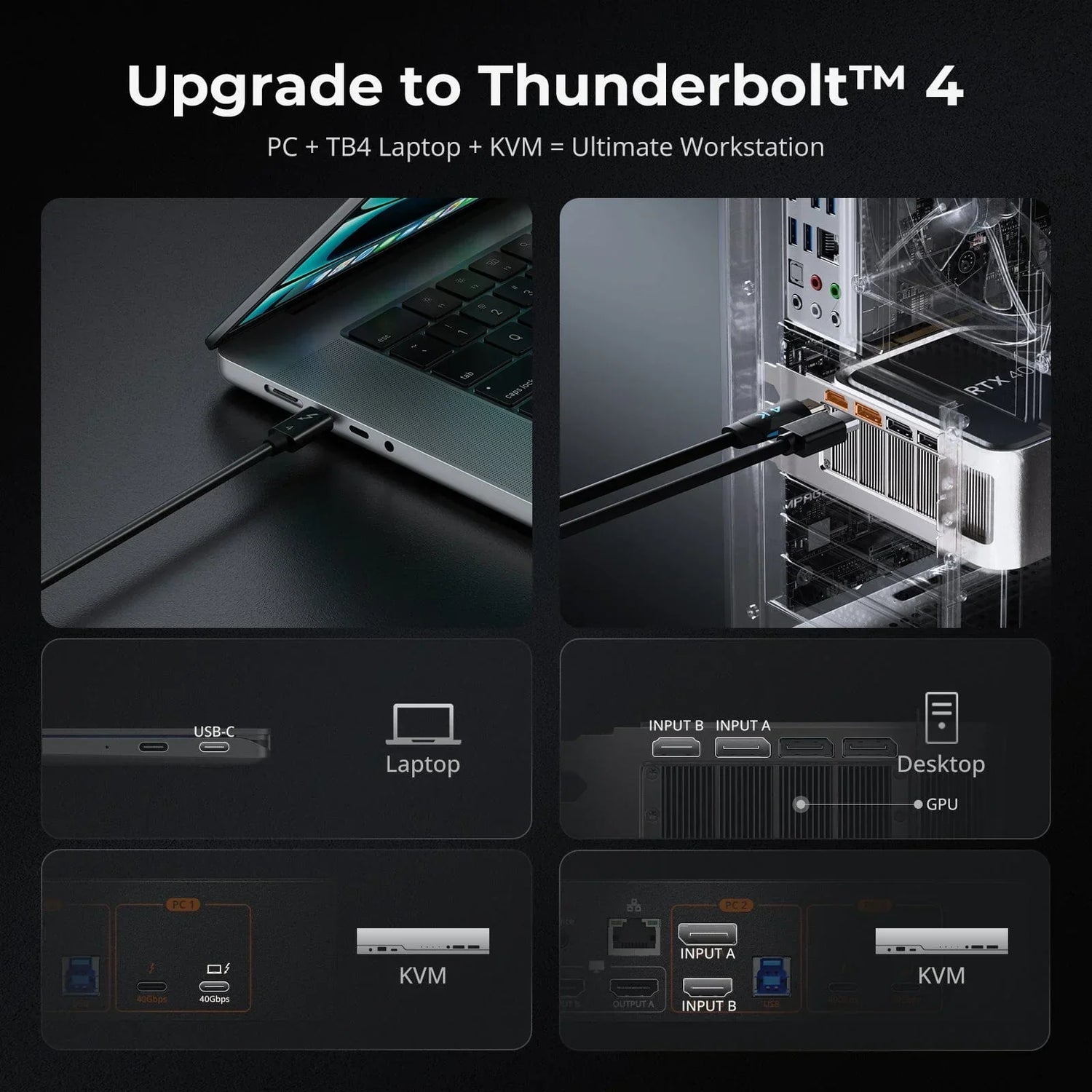Introduction
Monitors with KVM Functionality
Monitors with KVM functionality represent an innovation that blends display technology with multi-device management capabilities. These monitors are equipped with built-in KVM switch functionality, enabling users to connect and control multiple computers through a single display. The significant advantage of using these monitors is that they allow users to operate all connected computers with just one keyboard and mouse, greatly saving desk space and equipment investment.
This integrated solution is particularly suitable for users with limited desk space but complex work demands. For example, programmers, during the development process, may need to access multiple servers for coding, application testing, and data processing. With a KVM-enabled monitor, they can easily switch between different systems without the need for separate displays and control devices for each computer. This not only enhances work efficiency but also provides a neater and more organized working environment.
Additionally, monitors with KVM functionality offer excellent hardware support for remote work and virtual offices. In these scenarios, users may need to connect to multiple workstations locally and in the cloud simultaneously. KVM monitors make this multi-platform operation simple and efficient. By centralizing the management of different computer resources, users can complete all tasks on one interface without frequently switching between different physical devices, greatly improving work flexibility and efficiency.
KVM Switches
As an independent hardware solution, KVM switches offer an efficient way to manage multiple computers with just one set of keyboard, monitor, and mouse. These switches are designed mainly for professional users who need to access and control multiple computers in their work, such as IT administrators, network engineers, and professionals working in complex task environments.
The main advantage of KVM switches lies in their exceptional flexibility and expandability. Users can choose the appropriate model according to their specific needs. For instance, some models may support more input ports, suitable for data centers managing a large number of servers, while others may emphasize higher video resolution and transmission speed, suitable for graphic designers or video editors. This customizable feature allows KVM switches to adapt to various work environments and requirements.
Furthermore, KVM switches play a key role in enhancing work efficiency. They allow users to quickly switch control between different computers, saving the hassle of frequently changing physical connections. In emergency situations, such as needing to respond quickly to network security incidents, KVM switches enable network administrators to access and control critical systems immediately, ensuring timely problem resolution.
Comparative Analysis
Firstly, from the perspective of space utilization and convenience, monitors with integrated KVM functionality excel in saving desk space. This all-in-one design eliminates the need for additional external switches, providing an ideal solution for users with limited office desk space. In contrast, while standalone KVM switches require additional space, they offer greater convenience in operation, especially when frequent switching between multiple computers is necessary. KVM switches can achieve rapid and seamless switching.
Secondly, considering flexibility and expandability, KVM switches have a clear advantage. They typically offer a wider range of customization options, including the ability to connect more computers and a more diverse configuration of input/output ports, meeting the needs of specific work environments. For professional users needing customized solutions, such as data center managers or workstation users requiring multiple port connections, KVM switches provide a higher degree of adaptability and expansion possibilities.
Finally, in terms of suitable scenarios, both have their strengths. Monitors with KVM functionality are suitable for users with limited desk space and simpler device switching needs, such as small office or home office environments. KVM switches, on the other hand, are more suitable for scenarios requiring high flexibility and complex device management, such as IT departments in large enterprises, multimedia studios, or high-load scientific computing environments.
Conclusion
In considering monitors with KVM functionality and KVM switches, it is clear that each solution has its unique advantages, suitable for different usage requirements and environments. When choosing the right equipment, users need to carefully weigh their actual situation, including available physical space, the complexity of device management, and budget constraints.
Monitors with KVM functionality, with their integrated design, provide a perfect solution for environments with limited desk space, especially suitable for users who need a simple yet effective device management method. KVM switches, with their high degree of flexibility and expandability, play an important role in professional environments where managing a large number of devices or having special configuration requirements is essential.




